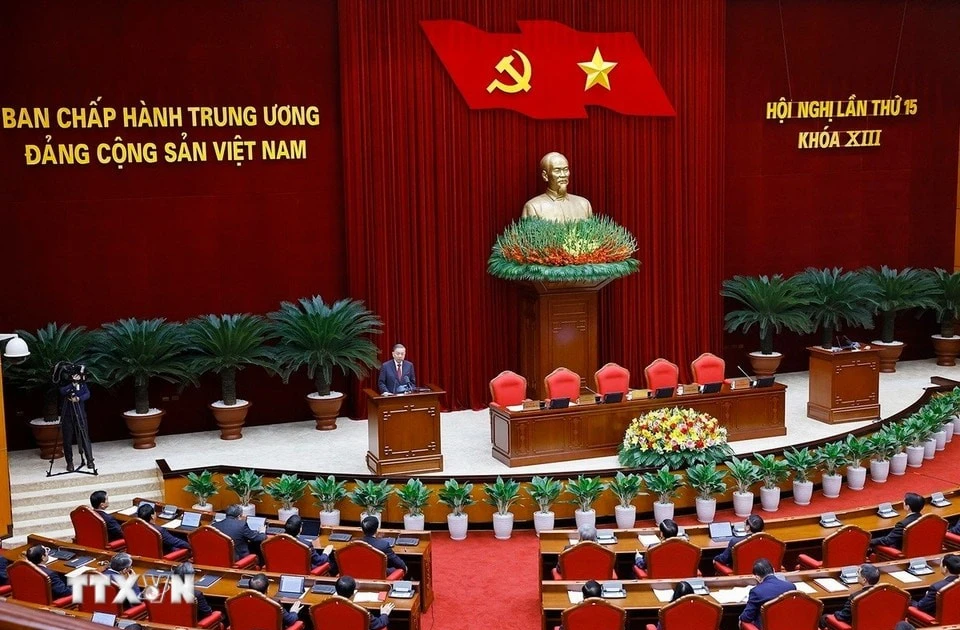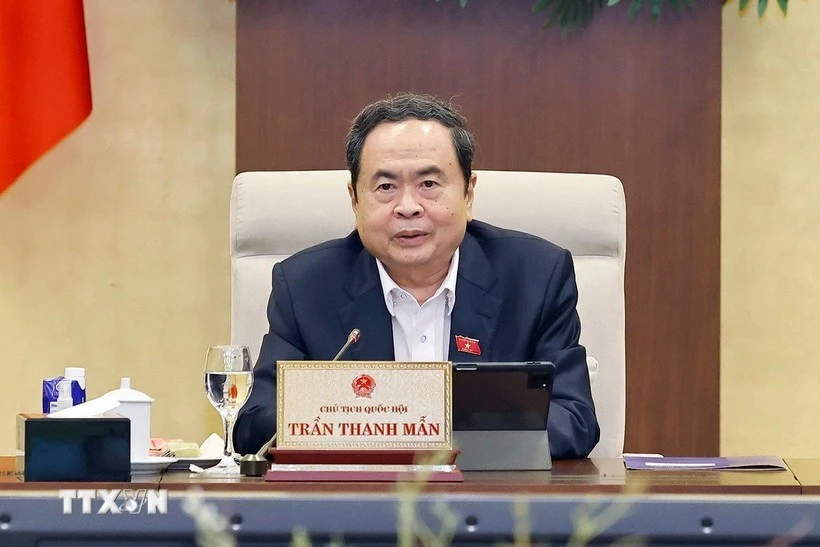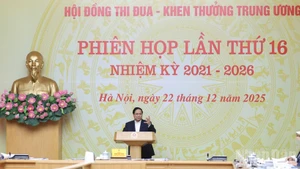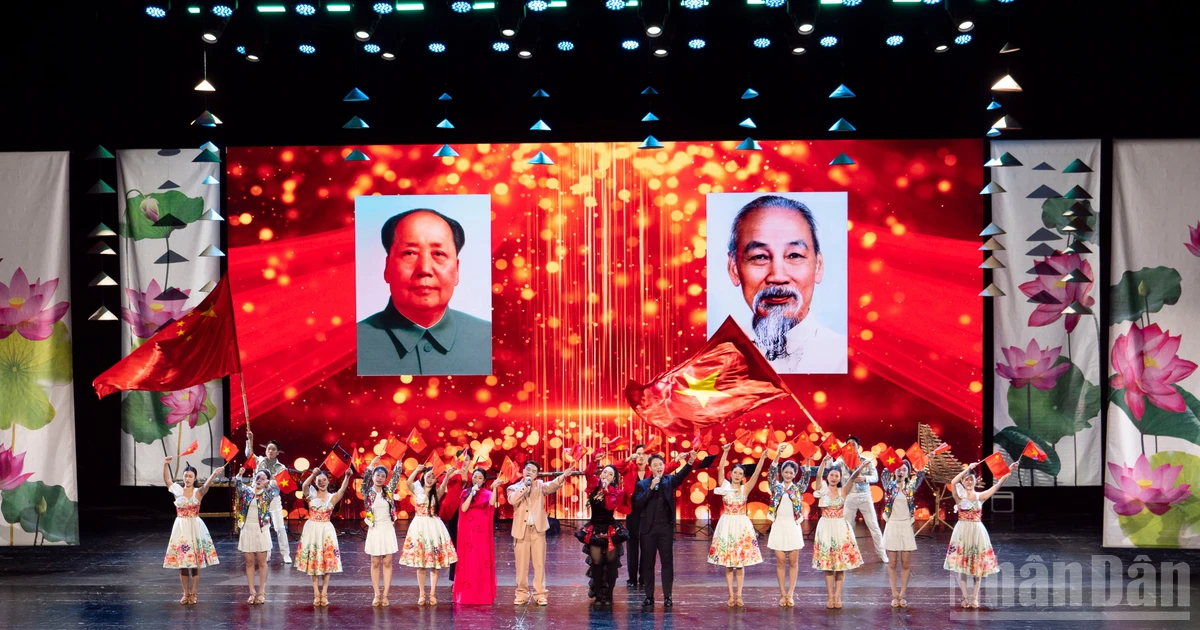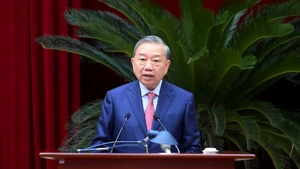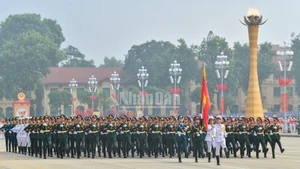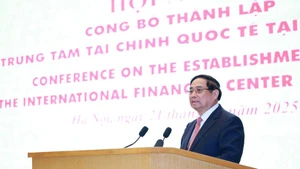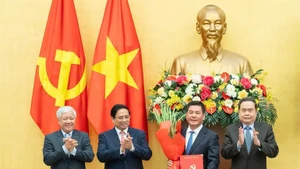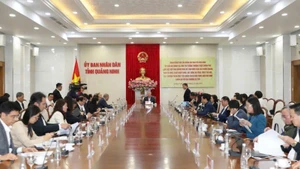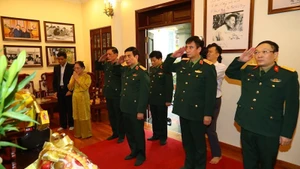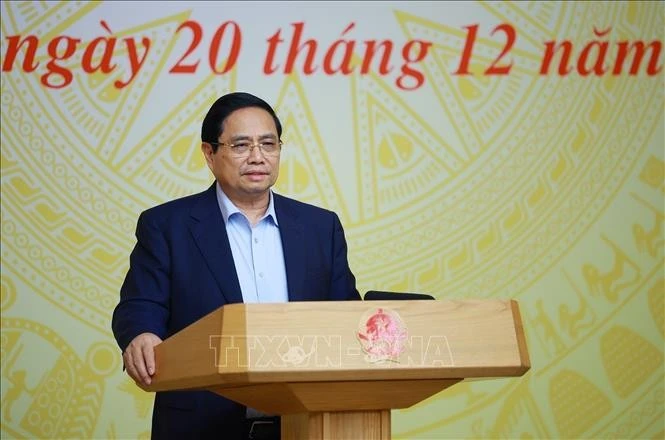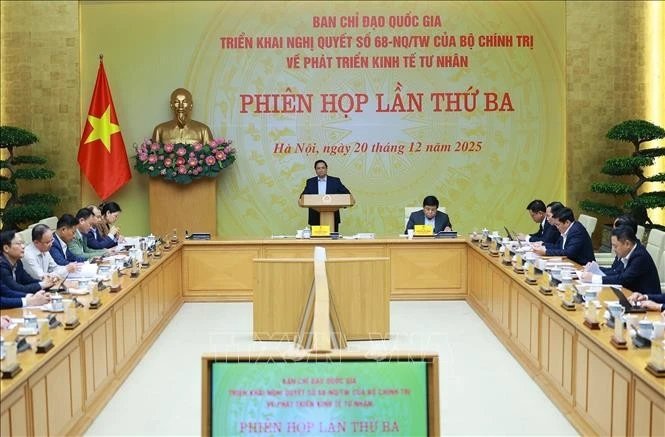Lam Dong, with its history of valiant struggle, has undergone numerous phases of development and change. The former bases and battle zones, once scorched and desolate, are now flourishing.
Heroic memories
In a spacious house by the Da Koi stream, village elder and former guerrilla K’Sau welcomed us with a warm smile. Despite having lived through 76 seasons of farming, his voice remained as strong and resonant as the forest trees: “When the Revolution, the cadres and Uncle Ho’s soldiers came, the Ma people of Loc Lam felt as though they had seen the light of the sun. From that moment, the villagers listened only to the Party and Uncle Ho, building up our forces and bravely fighting to protect our villages.”
Loc Lam commune is home to nearly 3,000 people, with the majority being the Ma ethnic group, who make up over 83% of the population. In 1978, Loc Lam was honoured with the title “Hero of the People’s Armed Forces.”
Recalling the past, K’Sau recounted that during the resistance, the communes of Loc Bac, Loc Nam, and Loc Lam launched various movements such as the “Five Emulations” and “Four Bests” among the youth, focusing on repelling enemy, combating saboteurs, shooting down enemy aircraft, and reinforcing the armed units.
At that time, Loc Lam had a population of just over 300, yet about 80 Ma people from the villages joined the liberation forces, revolutionary agencies and transported ammunition and supplies for combat operations. They performed outstandingly in their mission as a resistance base of Lam Dong Province and a key link on the east-west corridor of the southern battlefield.
Due to its strategic importance, Loc Lam became a fierce battleground. The local army and civilians engaged in 93 battles, eliminated 370 enemy troops, and shot down six aircraft. “Dozens of sons and daughters of Loc Lam bravely sacrificed their lives so that the country could be reunified and our villages could enjoy the peace today,” former guerrilla K’Sau shared.
“During the resistance against the Americans, Commune 5 - the old name for Dinh Trang Thuong - was a crucial strategic zone and witnessed many prolonged battles until the spring of 1975,” former Party Secretary of the commune, K’Bren, greeted us with his recollections.
At the time, Commune 5 had around 350 inhabitants, but suffered 29 martyrs, seven wounded or sick soldiers, and 33 families were awarded resistance medals and orders, with one Mother awarded the title of Heroic Vietnamese Mother.
Following in the footsteps of his forefathers, K’Bren said he joined the revolutionary movement in 1961 by operating in the forests. By early 1968, he had the honour of becoming a soldier in Uncle Ho’s army.
“Each time I look at the precious medals awarded by the State, I remember my comrades who gave their heroic blood to the motherland,” K’Bren said emotionally.
Following the route connecting the flower city of Da Lat to the coastal city of Nha Trang, we arrived in Da Chais commune, Lac Duong District, Lam Dong Province, to hear more stories of the resistance.
Inside a traditional house, veteran and village elder Ha Tam recalled that during the war, all villagers from Dong Mang, Da Tro, Dung K’Si, and Klong Klan united to follow the revolutionary cause.
“Our people wholeheartedly followed the Party and the revolution to protect our villages, without fear. At the age of 18, I became a liaison, and after two years, I volunteered to transport ammunition. Back then, enemy planes heavily bombed this area; I was lucky to survive, but many here made the ultimate sacrifice,” he said.
A bright future for land of revolution
The days of fire and war have receded into the past, forever etched in history. Today, Loc Lam is home to peaceful, vibrant Ma villages, nestled amidst ancient forests and the cool waters of the Da Koi stream.
The revolutionary spirit of the past has now fused with a spirit of solidarity, fostering a prosperous and beautiful community on this heroic land. A true milestone was reached when Loc Lam achieved the status of a new-style rural commune.
Fifteen years ago, the poverty rate in the commune stood at 47.6%; today, it has fallen to just 3.4%. People'’ houses are sturdier, and their living standards have significantly improved.
"Witnessing the daily transformation of our homeland fills us with pride. Loc Lam will continue to uphold its heroic tradition and flourish green and strong like our beloved mountains and forests," said K'Giap, Vice Chairman of the Loc Lam Communal People’s Committee.
Once listed among the most disadvantaged communes of Lam Dong Province, Dinh Trang Thuong has now donned the fresh, green cloak of peace and prosperity.
“There are endless old stories, but today it’s all about development - good food, fine clothes, and sending our children to university,” veteran K'Po said heartily.
Despite suffering a 61% disability, elder K’Po remains actively engaged in developing the local economy.
“I am a soldier of Uncle Ho, living on heroic land; I must set an example. My family owns 3.5 hectares of land where we grow coffee, pepper, and raise livestock, never letting the land ‘sleep’ idle. Last year, we earned over 700 million VND - a figure worth inspiring others to work hard and improve their lives. As Uncle Ho said, ‘A wealthy people means a strong country’,” he added with a satisfied smile.
K’Sor Huan, Vice Chairman of the Dinh Trang Thuong Communal People’s Committee, noted that many families now run successful production models similar to elder K’Po's, helping raise the commune’s average per capita income to 47 million VND.
Da Chais has seen similar growth. Since the construction of National Highway 27C through the area, this heroic land has gained fresh momentum for development.
“Da Chais is now a new-style rural commune, and the living standards of our people have improved greatly,” said veteran and village elder Ha Nhung.
“To promote the glorious traditions of our ancestors, our younger generation remains active and united, helping one another and supporting the community’s economic development. We are currently striving for an enhanced new-style rural status, with the average per capita income reaching 61 million VND per year,” shared Cil Ha Nien, a young and successful entrepreneur and Vice Chairman of the Da Chais Communal People’s Committee.
Lam Dong is home to 47 ethnic groups, with ethnic minorities making up over 25.7% of the population. From 2019 to 2024, over 15 trillion VND in funding was mobilised through national target programmes to build new-style rural areas, while more than 1.264 trillion VND was specifically invested in ethnic minority regions. This has raised the average per capita income among ethnic minority communities to over 50 million VND annually.
Today, Lam Dong ranks among Vietnam’s more developed provinces, with annual budget revenues exceeding 10 trillion VND and an increasingly high quality of life for its residents.
Across the province, 14 communes have been awarded the title of Hero of the People’s Armed Forces. All 106 communes have now achieved new-style rural standards, and the province’s GRDP per capita exceeds 98.9 million VND.

